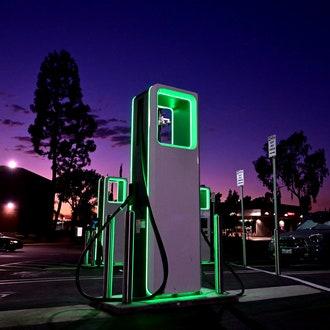Navigating the Wild West of EV Charging
With the rapid growth of electric vehicles (EVs) in recent years, the need for charging infrastructure has become increasingly important. However, the EV charging landscape is still relatively uncharted territory, often described as the “Wild West” due to its complexity and lack of standardization. In order to effectively navigate this challenging terrain, EV owners must familiarize themselves with the various charging options available and understand the potential challenges that may arise.
One of the first considerations for EV owners is the type of charger they require. EV charging stations typically fall into three categories: Level 1, Level 2, and DC fast charging. Level 1 chargers use a standard household electrical outlet and provide the slowest charging speed, usually adding around 4 to 5 miles of range per hour. Level 2 chargers require a dedicated 240-volt circuit, providing faster charging rates of around 25 miles of range per hour. On the other hand, DC fast chargers, commonly found at public charging stations, can charge a vehicle to 80% in as little as 30 minutes, making them ideal for longer trips.
However, the availability and accessibility of these charging options can vary greatly depending on location. While major cities usually have a more established charging network, rural areas and smaller towns may have limited charging infrastructure. This can pose a challenge for EV owners who rely on public charging when away from home. It is essential for them to plan routes carefully and ensure access to charging stations along the way.
Another challenge in navigating the EV charging landscape is the array of different charging networks and their associated charging stations. Numerous charging networks, each with their own specific requirements and membership plans, have emerged, creating a fragmented marketplace. This fragmented nature can lead to compatibility issues for EV owners, as not all charging networks are interoperable. It is crucial for EV owners to research and understand the various charging networks operating in their area, as well as the fees and membership plans associated with them, to avoid unexpected charges or incompatibility.
Furthermore, there are instances where charging stations may be occupied or out of service when EV owners reach their destination. While some charging networks provide real-time information on station availability, these features are not yet standardized across the board. This highlights the importance of utilizing smartphone applications or websites that provide up-to-date information on charging station availability, ensuring EV owners are not left stranded with a depleted battery.
A potential solution to the current challenges faced by EV owners is the ongoing effort toward standardization. Several organizations and authorities are working on creating an interoperable and standardized charging network that simplifies the user experience. These efforts include establishing common communication protocols, shared payment systems, and consistent availability information. As standardization progresses, navigating the EV charging landscape will become more seamless and user-friendly, reducing the stress and uncertainty faced by EV owners.
Navigating the Wild West of EV charging can feel daunting to new and experienced EV owners alike. However, with thorough research, careful planning, and the support of emerging standards, the challenges can be overcome. As the EV market continues to grow, it is expected that the charging infrastructure will mature and become more reliable, making the transition to electric vehicles an increasingly attractive option for individuals and businesses. Until then, EV owners must embrace the pioneering spirit of the Wild West and arm themselves with knowledge to successfully navigate this exciting, yet ever-evolving, terrain of electromobility.
Hey Subscribe to our newsletter for more articles like this directly to your email.
